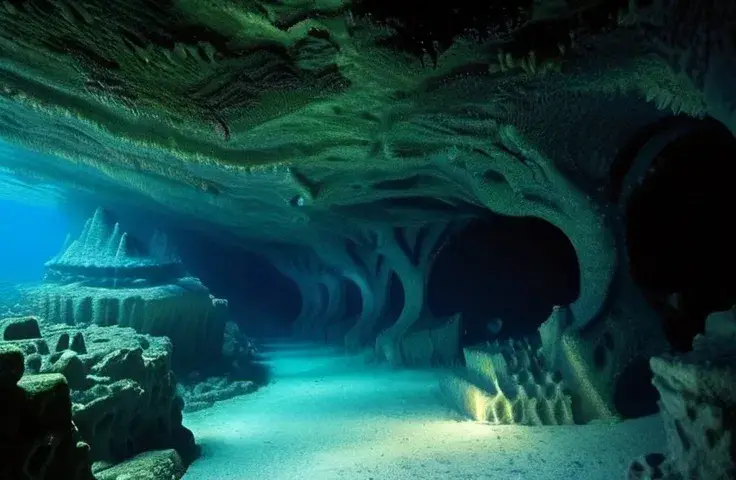These novel chilled panels can beat the summer heat without relying on air conditioning
The Cold Tube is a system of rectangular wall or ceiling panels that are kept cold by chilled water circulating within them. Since heat

[Aug. 18, 2020: University of British Columbia]
Many people beat the summer heat by cranking the air conditioning. However, air conditioners guzzle power and spew out millions of tons of carbon dioxide daily. They're also not always good for your health--constant exposure to central A/C can increase risks of recirculating germs and causing breathing problems.
There's a better alternative, say a team of researchers from the University of British Columbia, Princeton University, the University of California, Berkeley and the Singapore-ETH Centre.
They call it the Cold Tube, and they have shown it works.
"Air conditioners work by cooling down and dehumidifying the air around us--an expensive and not particularly environmentally friendly proposition," explains project co-lead Adam Rysanek, assistant professor of environmental systems at UBC's school of architecture and landscape architecture, whose work focuses on future energy systems and green buildings. "The Cold Tube works by absorbing the heat directly emitted by radiation from a person without having to cool the air passing over their skin. This achieves a significant amount of energy savings."
The Cold Tube is a system of rectangular wall or ceiling panels that are kept cold by chilled water circulating within them. Since heat naturally moves by radiation from a hotter surface to a colder surface, when a person stands beside or under the panel, their body heat radiates towards the colder panel. This creates a sensation of cooling like cold air flowing over the body even if the air temperature is quite high.
Although these types of cooling panels have been used in the building industry for several decades, what makes the Cold Tube unique is that it does not need to be combined with a dehumidification system. Just as a cold glass of lemonade would condense water on a hot summer day, cooling down walls and ceilings in buildings would also condense water without first drying out the air around the panels. The researchers behind the Cold Tube conceived of an airtight, humidity-repelling membrane to encase the chilled panels to prevent condensation from forming while still allowing radiation to travel through.
Like these kind of stories? Get The Brighter Side of News' newsletter.
Cooling down the outdoors
The team built an outdoor demonstration unit last year in Singapore, inviting 55 members of the public to visit and provide feedback. When the system was running, most participants reported feeling "cool" or "comfortable," despite an average air temperature of 30 degrees Celsius (86 degrees Fahrenheit). The panels also stayed dry, thanks to the special membrane.
"Because the Cold Tube can make people feel cool without dehumidifying the air around them, we can look towards shaving off up to 50 per cent of typical air conditioning energy consumption in applicable spaces," said Eric Teitelbaum, a senior engineer at AIL Research who oversaw the demonstration project while working at the Singapore-ETH Centre.
"This design is ready. It can obviously be used in many outdoor spaces--think open-air summer fairs, concerts, bus stops and public markets. But the mission is to adapt the design for indoor spaces that would typically use central air conditioning," he added.
Beyond the energy savings, technologies like the Cold Tube have a great future, says project co-lead Forrest Meggers, an assistant professor at Princeton's school of architecture and the Andlinger Center for Energy and the Environment.
"Because the Cold Tube works independently of indoor air temperature and humidity, keeping windows open in our increasingly hot summers while still feeling comfortable becomes possible," said Meggers. "The Cold Tube can offer relief in different regions, from North American homes and offices that currently rely on standard HVAC systems to developing economies that foresee significant need for cooling in the coming half-century."
Keeping indoor air healthy during the pandemic
There's another aspect of the Cold Tube that is particularly relevant in 2020, says Adam Rysanek.
"The COVID-19 pandemic has brought to the public's awareness how sensitive our health is to the quality of the air we breathe indoors. Specifically, we know that some of the safest spaces in this 'new normal' are outdoor spaces," said Rysanek. "As the climate changes and air conditioning becomes more of a global necessity than a luxury, we need to be prepared with alternatives that are not only better for the environment, but also our health. The idea of staying cool with the windows open feels a lot more valuable today than it did six months ago."
The team is currently using the data collected in Singapore to update their projections of the Cold Tube's effectiveness in indoor spaces globally. They plan to demonstrate a commercially viable version of the technology by 2022.
The Cold Tube is described in a paper published today in PNAS. It was developed with funding support from the Singapore National Research Foundation IntraCREATE SEED Grant programme. The project was led by Adam Rysanek (UBC), Forrest Meggers (Princeton University) and Jovan Pantelic (UC Berkeley) and was administered by the Singapore-ETH Centre.
For interviews contact lou.bosshart@ubc.ca (for Adam Rysanek) or mollyaseltzer@princeton.edu (for Forrest Meggers and Eric Teitelbaum).
Media photos in Dropbox: https://www.dropbox.com/sh/jlv9rmq0dd5bf1b/AABt9IbxDIpeDUBymTpygsSTa?dl=0



